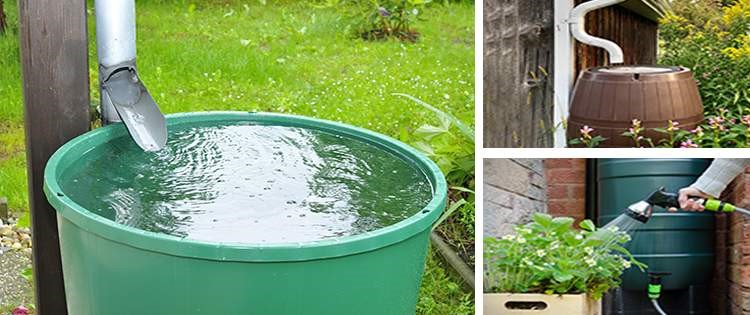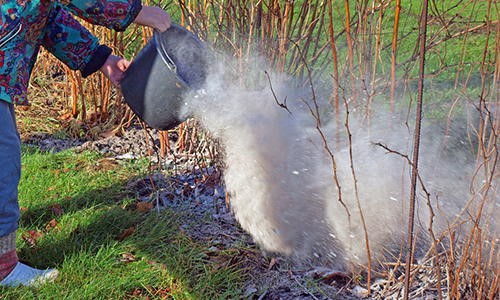Are you looking for a unique vegetable to add to your garden this year? Parsnips are an easy-to-grow root vegetable with a sweet, nutty flavor. In this guide we’ll cover all the basics of growing parsnips in the garden, from seed selection to harvesting and storage.
A Brief History
Parsnips have a long and interesting history.
Originally native to Eurasia, they were first cultivated in the Mediterranean region thousands of years ago. The ancient Greeks and Romans prized parsnips for their sweet flavor and medicinal properties.
The Romans spread parsnips throughout Europe, and by the 16th century they were widely grown in England. In America, parsnips were among the first vegetables to be grown by colonists. In fact, the first successful crop of parsnips in America was planted by the pilgrims at Plymouth Plantation in 1621.
By the 19th century, parsnips had become an important crop in many parts of the world. They are especially popular in northern Europe where they are used to make soups, stews, and even desserts. In recent years, parsnips have seen a resurgence in popularity as people discover their nutritional benefits and delicious flavor.
Now that you know a bit more about the history of parsnips, it’s time to learn how to grow them in your garden! Start by choosing a suitable location for your parsnip patch and preparing the soil for planting. Once your parsnip patch is ready, it’s time to sow your seeds or seedlings directly into the ground. With regular care and attention, you can enjoy a bumper crop of delicious parsnips!
Nutritional Benefits
Parsnips are a highly nutritious vegetable, packed with essential vitamins and minerals. They are an excellent source of dietary fiber, providing 4 grams of fiber per 1 cup (134 g) serving. This helps promote healthy digestion and can help lower cholesterol levels. They are also a good source of potassium, vitamin C, vitamin K, magnesium, manganese, calcium, iron and phosphorus.
In addition to their nutrients, parsnips contain antioxidants such as polyphenols and flavonoids which help to protect the body from free-radical damage. Studies have linked the consumption of parsnips to a reduced risk of certain cancers and heart disease.
Parsnips are low in calories and rich in dietary fiber which makes them a great addition to any weight loss diet. They also provide essential vitamins and minerals that help the body function properly and promote overall health.
For those looking for a healthy side dish or snack, try roasting parsnips with some olive oil and seasonings for a delicious treat. Or add them to soups and stews for a nutritious boost. Parsnips can also be boiled or steamed and served as is or mashed with other vegetables such as carrots or potatoes. For a unique twist on mashed potatoes try mashing parsnips with potatoes for an earthy flavor.
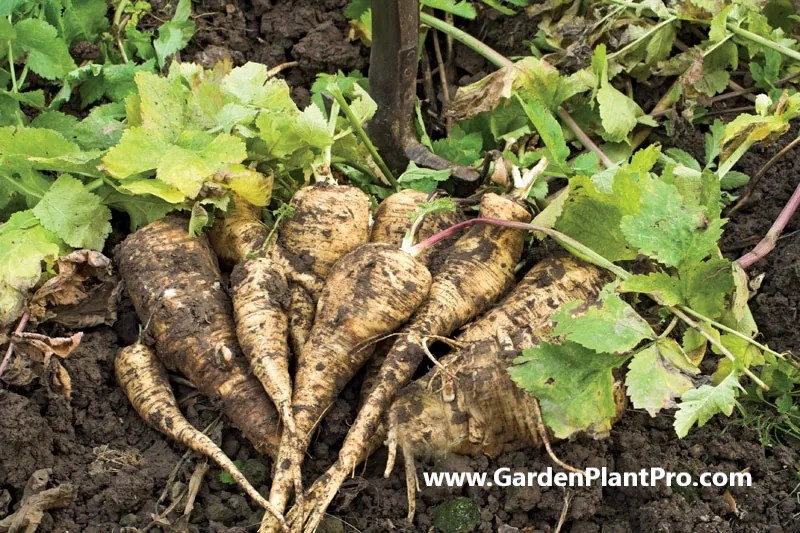
Common Varieties & Their Uses
There are many varieties of parsnips available, each with their own unique flavor and texture. Popular varieties include Guernsey, Hollow Crown, Javelin, and Supersnip. Each variety has its own unique qualities and flavor, so it is important to research and select the variety that best suits your needs.
Guernsey is a great all-purpose variety that is known for its sweet flavor. It has a creamy white flesh and is ideal for roasting or boiling.
Hollow Crown parsnips are highly sought after for their sweet, nutty flavor. They have a light yellow flesh that is perfect for roasting or pureeing into soups and sauces.
Javelin is a great variety for eating raw due to its crisp texture and sweet taste. It has a pale yellow flesh and can also be boiled or steamed.
Supersnip is a popular choice for making chips or fries due to its sweet flavor and crisp texture. It has an orange-yellow flesh that holds up well to cooking methods like baking or frying.
For the best tasting parsnips, it is important to leave them in the ground for a few frosts before harvesting. This helps to bring out the sweetness in each variety, as well as make them more tender and easier to prepare.
When To Sow
When it comes to sowing parsnips, timing is everything. Parsnips should be sown directly at a depth approximately twice the diameter of the seed. The ideal soil temperature for germination is between 10°C and 20°C.
In colder climates with short summers it’s best to sow parsnip seed a week or two after the last frost has passed to allow plenty of growing time before autumn frosts. In warmer areas, parsnips can be sown from midwinter until early autumn.
Dig a shallow groove and sow seed around 6mm deep. It is important to choose a suitable location in the garden that receives plenty of sun, as parsnips prefer an open, sunny site with deep, light soil.
Once you have prepared the soil, you can sow your parsnip seeds or seedlings. Make sure that you provide enough water and fertiliser to ensure that your parsnips get off to a good start.
DIY PROJECT: Collect rainwater no matter where you live...
This DIY project is the best way to legally collect rainwater NO MATTER where you live. Get chlorine-free water, cut down on your water bills, and have enough for an emergency situation or to water your garden. Read More Here...
Regular watering is essential, as parsnip seed doesn’t keep well if it dries out. You can harvest your parsnips when they reach maturity, which will depend on the variety you have chosen to grow. As soon as they are ready to harvest, you can store or preserve them for later use.
Choosing A Suitable Location In The Garden
Choosing a suitable location in the garden for growing parsnips is important to ensure they receive the right amount of sunlight and have enough space to grow.
Parsnips prefer full sun, so look for a spot that gets at least 6 hours of direct sunlight each day. If you don’t have a sunny spot, try to find one that gets partial shade. To ensure your parsnips have enough room to grow, make sure the rows are 40-50cm apart and the seeds are sown 1/2 inch apart.
It is also important to make sure you choose an area with well-draining soil and that does not become waterlogged during heavy rain or irrigation. Once you’ve found the perfect spot for your parsnips, it’s time to prepare the soil for planting.
Preparing The Soil
Preparing the soil for parsnip cultivation is an important step in ensuring a successful harvest. Begin by digging the soil to a depth of 12 to 18 inches, removing all stones and any large clumps of grass or weeds. The soil should be well-worked, with a loose texture, to ensure optimum root growth.
Parsnips prefer a sunny, open site with soil that has good drainage. To achieve this, add organic matter such as compost or manure and mix it into the soil before planting. Keep the soil moist by adding mulch around the plants and water them regularly, taking care not to overwater them as this can cause root rot.
Aim to keep the soil evenly moist throughout the growing season. Additionally, make sure your garden soil is rich, deep and loamy for best results and avoid hoeing close to the plants as this can damage the top of the root.
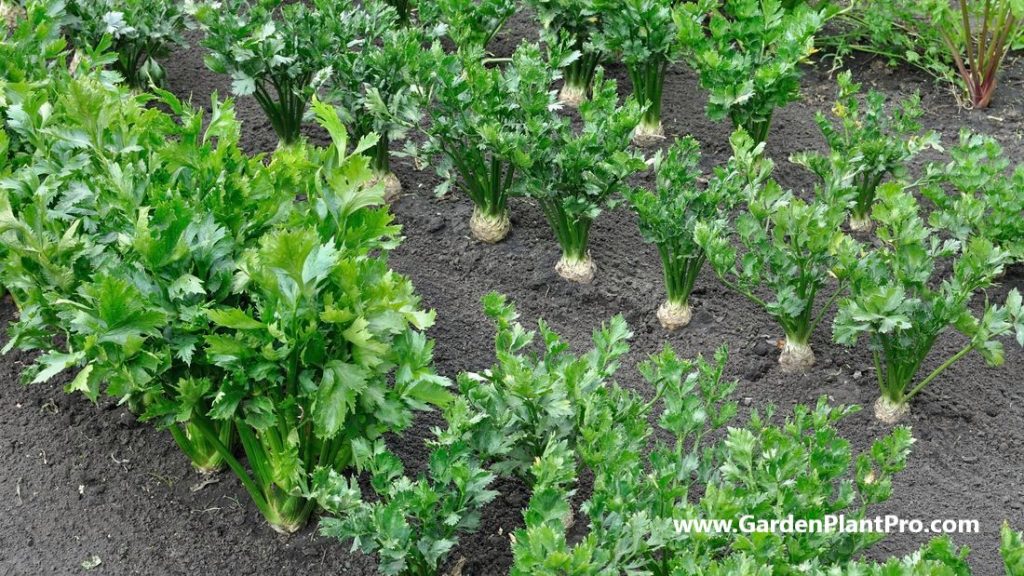
Planting The Seeds Or Seedlings
Now that you have chosen a suitable location in the garden, prepared the soil and sowed your parsnip seeds, it’s time to move on to planting the seeds or seedlings. If you’ve decided to use seedlings, make sure to buy healthy ones from a reputable supplier.
When planting your seeds or seedlings, the most important thing is to ensure that they are planted at the correct depth. Dig a shallow groove and sow seed around 6mm deep. For larger varieties, such as Gladiator and All Gold, you should sow them around 12mm deep. Make sure to firm the soil down around each seed or seedling firmly, making sure there are no air pockets.
The easiest way to start parsnips from seed is to put them straight into the prepared garden bed outside. Seed can take up to a month to germinate, so it’s important to keep the area moist while they are germinating. Parsnip is best sown at soil temperatures of between 10°C and 20°C. Always sow fresh seed as parsnip seeds do not store well and seeds that are more than a year old will have a reduced germination rate.
Once your parsnips have germinated and are starting to grow, you can thin them out so that each plant has enough space for it to grow properly. To do this, carefully remove any excess plants from around the main one, leaving the strongest and healthiest plants in place. This will help ensure that your parsnips have enough space for their roots system to develop properly so that they can reach their full potential in terms of size and flavour.
Parsnips take time – most varieties need at least six months from sowing till maturity – so be sure to be patient with them! With some care and attention during this time period, you should be able to enjoy a delicious harvest of freshly grown parsnips come autumn.
Caring For The Seedlings
Once the seeds have been sown, it is important to provide proper care for the seedlings. In order to ensure that the plants get off to a strong start and thrive, it is important to keep weeds at bay, water and fertilize regularly, and protect from pests and diseases.
Weeds can be a major issue with parsnips, as they can quickly compete for resources such as water and nutrients. To keep weeds in check, hoeing or hand weeding can help. It is also important to mulch around the plants to help retain soil moisture and reduce weed growth.
To ensure parsnip plants receive adequate water, it is important to water regularly during dry spells. Water should be applied evenly over the area, making sure not to over-water. Fertilizing is also important for healthy growth and should be done every few weeks with a balanced fertilizer.
In addition to weeds and inadequate watering, parsnips can also be affected by a number of pests and diseases, including carrot rust fly, root knot nematode, and downy mildew. It is important to watch closely for signs of any infestation or disease and take steps to control it if needed.
Finally, planting companion plants that are beneficial can also help improve the health of parsnip plants by providing additional nutrients or attracting beneficial insects that prey on pests. Some good companion plants include garlic, onions, carrots, radishes, tomatoes, and nasturtiums.
Do you have some charcoal in your house right now? We call charcoal a “miracle leftover” for anyone who wants to be a little more self-sufficient and cut costs. That’s because it can help you with so many different things around the house and garden. You can even use it to make an energy-free fridge. Read More Here...
By following these guidelines for caring for parsnip seedlings, you will be well on your way to enjoying a successful crop of delicious parsnips.
Watering & Fertilizing
Regular and deep watering is key, especially during dry periods, to keep the soil moist and well-drained. Fertilization of the soil is also beneficial, as it helps to provide essential nutrients for healthy growth. To ensure plants receive all the nutrients they need, incorporate plenty of organic matter and an all-purpose fertilizer into the area before planting. When growing parsnips, water them well or the roots will be flavorless and tough.
When & How To Harvest
The best time to harvest your parsnips is after they have undergone a few light frosts over a period of time. This will ensure that the roots are full of flavour and ready for harvest.
When harvesting, use a garden fork to carefully ease them out of the ground. Roots can be left in the ground and harvested as required, although lifting a few extra in case of spoilage is recommended. Be sure to wear gloves when harvesting, as parsnips may cause skin irritation.
Once you have harvested your parsnips, you can store them for up to six weeks in a cool, dark place such as a root cellar or refrigerator. When storing, be sure to keep them away from excessive moisture and humidity. To preserve parsnips for longer storage periods, you can blanch them in boiling water for two minutes before freezing them in air-tight bags or containers.
Parsnips are an incredibly versatile vegetable, so be sure to explore all the possibilities that they have to offer! With proper care and harvesting methods, you will be able to enjoy your homegrown crop throughout the year.
Storing & Preserving
Storing and preserving parsnips is essential to ensure that they remain fresh and flavorful. Parsnips require cold storage, with temperatures between 32 and 35°F (0 and 2°C), and a humidity level of 90 to 95%. The dried roots should be packaged in plastic food storage bags and stored in the bottom of the fridge.
Harvested parsnips should have their foliage trimmed down to 2 to 3 inches before being stored. This will help preserve their nutritional value and prevent spoilage. If storing them for longer periods of time, such as for winter, freezing is also an option. To freeze parsnips, first wash them thoroughly and cut into smaller pieces if desired. Blanch them for about two minutes in boiling water before transferring them to an ice bath for an additional two minutes. Once cooled, place them on a baking sheet and freeze until solid before transferring them to freezer bags or containers.
Parsnips are a highly nutritious vegetable that can be enjoyed year-round when stored properly. With the right care and attention, they can provide a fresh and delicious addition to your meals.
Common Diseases & How To Control Them
Parsnips can be affected by a range of diseases, including Parsnip canker (fungal) and watery soft rot (fungal). It is important to be vigilant in order to stop any unwanted diseases from ruining your parsnips.
To prevent the spread of diseases, it is important to practice crop rotation, as this will help break the life cycle of some fungal organisms. It is also helpful to remove any infected plants and debris from the garden and dispose of it properly.
Cultural control methods such as hand weeding and removing any weeds that compete with parsnips for nutrients and water can also help reduce the spread of diseases. Additionally, planting the right crops next to each other can suppress weeds, improve the quality of the soil, conserve water, and provide a barrier against disease.
If symptoms of disease appear on your parsnip plants, it is important to identify them accurately so you can choose an appropriate treatment. If fungicide is required, always follow the instructions on the label carefully.
Common Pests & How To Control Them
Parsnips are susceptible to many common garden pests, including aphids, cabbage loopers, carrot rust flies, and slugs. While these pests can be a nuisance, controlling them is essential for a successful crop.
Aphids feed on the sap of parsnips plants, causing stunted growth and deformed leaves. To control aphids, use an insecticidal soap or neem oil. You can also try introducing beneficial insects such as ladybugs or lacewings to your garden to help keep the aphid population in check.
Cabbage loopers are caterpillars that feed on the leaves of parsnips plants. To control them, use Bacillus thuringiensis (Bt) or spinosad as an effective biological control. Hand-picking is also an option if you catch them early enough.
Carrot rust flies lay eggs near the base of the parsnip plant and their larvae feed on the roots. To prevent an infestation of carrot rust fly larvae, cover your plants with row covers or use yellow sticky traps to catch adult flies before they can lay their eggs.
CASE STUDY: We've been living off the grid for the last 40 years...
In all that time an electric wire has never been connected to our house. We haven’t gotten or paid an electricity bill in over 40 years, but we have all the electricity we want. We grow everything we need, here, in our small backyard. We also have a small medicinal garden for tough times. Read More Here...
Finally, slugs are a common problem for parsnips and can cause significant damage if left unchecked. To control slugs, use beer traps or spread diatomaceous earth around the base of your plants to discourage them from feeding on your parsnips.
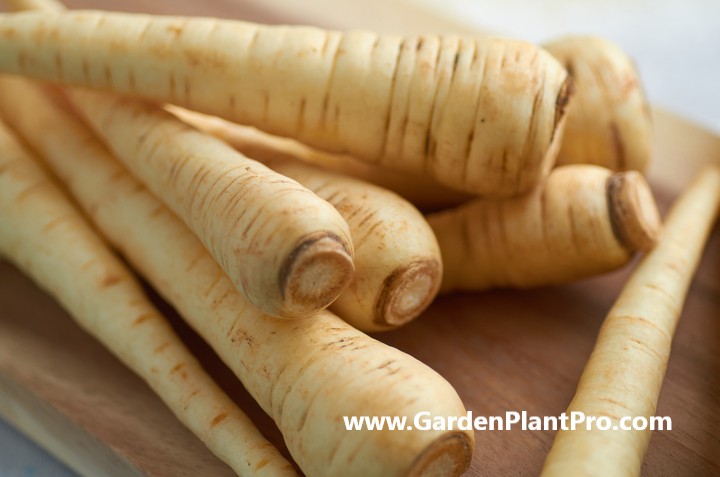
Beneficial Companion Plants
Companion planting is a beneficial practice for many different plants, including parsnips. There are certain companion plants that are especially beneficial for parsnips, and can help to promote healthy growth and minimize the risk of pests and diseases.
Garlic and onions are both great companion plants for parsnips. Garlic helps to repel pests, while onions help to reduce the risk of fungal diseases. Planting them together helps to create a healthy environment where both plants can thrive.
Other root vegetables such as potatoes, radishes, and peppers can also be planted with parsnips. Radishes are particularly useful as they are known for repelling flea beetles. Potatoes and peppers also make good companion plants as they require similar amounts of water and nutrients as parsnips.
Anise is another great companion plant for parsnips, as it helps to repel pests and attract beneficial insects. Anise also has a strong smell that further deters certain pests, such as cabbage maggots.
By planting these companion plants with parsnips, gardeners can promote healthy growth and minimize the risk of pests and diseases. It is important to remember that different plants require different amounts of care and attention, so it is important to research each plant before planting them together in the same bed.
Using Your Parsnips
Using your parsnips is a great way to add unique flavors and textures to your dishes. Parsnips are a versatile root vegetable that can be boiled, mashed, roasted, or added to soups and stews. When cooked, parsnips have a sweet, nutty flavor and a creamy texture.
Before using your parsnips, make sure to wash them thoroughly under cool running water and use a vegetable brush to remove any dirt or debris. If the parsnips have too much soil on them, you can peel the skin off with a vegetable peeler. Once the parsnips are washed, cut off any root ends or leaves before you begin preparing them.
Boiling is one of the simplest methods for cooking parsnips. Cut the parsnips into cubes or slices and place in a pot of boiling water. Boil for 10-15 minutes or until they are tender when pierced with a fork. You can also add herbs and spices such as garlic, onions, or rosemary to enhance flavor. Drain the cooked parsnips in a colander and season with salt and pepper as desired.
You can also roast your parsnips for an easy side dish. Preheat your oven to 425 degrees Fahrenheit and line a baking sheet with parchment paper. Place the prepared parsnips on the baking sheet and drizzle with olive oil, salt, and pepper. Roast for 20-30 minutes or until they are golden brown and tender when pierced with a fork.
Mashed parsnips are another delicious way to enjoy this root vegetable. Boil the cubed parsnips in salted water until tender then drain them in a colander. Mash the cooked parsnips with butter and cream until creamy then season with salt and pepper as desired. You can also add garlic powder, nutmeg, or other herbs for added flavor.
Parsnips are also great additions to soups and stews. They add a sweet and slightly nutty flavor to any broth-based dish, and can be used in place of carrots or other root vegetables in many recipes. To use parsnips in soup or stew, simply peel and chop them into small pieces and add them to the pot along with other vegetables and ingredients.
If you’re looking for a healthy and flavorful snack, try making parsnip chips! Thinly slice parsnips into rounds, toss with olive oil, and bake in the oven until crisp and golden brown. You can season them with salt and pepper, or add your favorite herbs and spices for extra flavor.
Overall, parsnips are a versatile and delicious root vegetable that can be enjoyed in a variety of ways. Whether you prefer them mashed, roasted, or added to soups and stews, there are plenty of ways to incorporate parsnips into your meals and enjoy their unique flavor and nutritional benefits.


